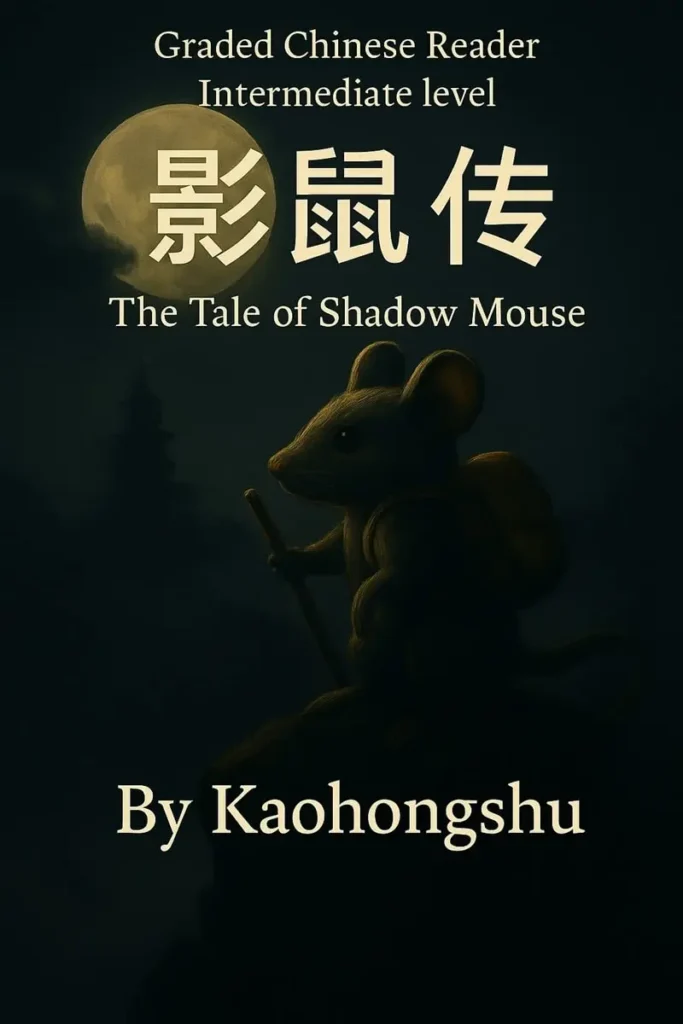The answer isn’t obvious. Today, I welcome Dorota from Mandarin Zest, who will share her experience. She completed a one-year Mandarin course at Xiamen University in Mainland China and earned her Master’s degree at National Taiwan University in Taipei. Having lived in both places, she will explain why it is important to carefully consider your options before choosing China or Taiwan for your Mandarin learning journey.
Let’s explore the differences in language, teaching, accents, and cultural aspects that can make studying in China or Taiwan a very distinct experience.
1. Simplified vs. Traditional Characters
The first and perhaps most important difference is the writing system. China uses simplified characters, introduced in the second half of the last century. Taiwan, however, still uses traditional characters, which were also used in China before the Communist era. Today, outside of China, simplified characters are common in Singapore, while traditional characters are prevalent in Taiwan, Hong Kong, Macau and most overseas Chinese communities.
Many Chinese learners assume that traditional characters are much harder to learn, as they were simplified to improve literacy rates in China. However, I personally found it surprisingly easy to learn traditional characters. Just like their simplified counterparts, traditional characters are composed of basic radicals and building blocks that become easier to remember over time. Moreover, seeing traditional characters on the streets of Taiwan helped me immerse myself in this writing system.
While simplified characters are easier to write, I wouldn’t overemphasize this advantage. In fact, most of us will be typing characters on our phones, using pinyin or zhuyin (see below). This is why I wouldn’t stress over memorizing every stroke of the most complex traditional characters.
Additionally, traditional characters carry a much richer cultural heritage. When I studied in Taiwan, I attended classes on the history and development of Chinese characters. It was a fantastic experience—my teacher was very engaging and passionate, helping me understand just how much meaning they contain.
That said, since simplified characters are used in China, they are often regarded as more practical. Personally, I don’t mind using either when necessary—I see both simplified and traditional characters as valuable.

2. Phonetic Systems: Pinyin vs. Bopomofo
Speaking of characters, we should also discuss the different phonetic systems used in China and Taiwan. The standard pinyin system that most learners are introduced to at the beginning of their Chinese studies is not widely used in Taiwan, which instead relies on zhuyin.
Zhuyin, also called Bopomofo, is a phonetic system first introduced in China in the 1910s. It consists of 37 symbols representing syllables, along with five tone marks (learn more about it here).
Using zhuyin can be tricky because you must always be sure of the tone of the word you’re typing. On one hand, this can slow down your typing. On the other hand, it helps reinforce correct tone pronunciation, which is very beneficial! However, in terms of convenience and speed, standard pinyin is my preference—I still use it more often, even with traditional characters.
If you’re considering studying in Taiwan, learning zhuyin can be useful. Even if you choose to use pinyin on your phone, you may still encounter zhuyin in daily life. I learned it after struggling to find songs on a karaoke playlist in Taiwan—they were arranged alphabetically using zhuyin symbols.

3. Accent and Pronunciation
Another important consideration is the difference in accent and pronunciation. However, we must first clarify what we mean by “China,” as the country’s sheer size results in incredible linguistic diversity.
Generally speaking, I wouldn’t compare a single “Chinese” accent to a “Taiwanese” one. Instead, I would say that Taiwanese Mandarin is one of many regional variants, alongside the numerous dialects and accents spoken within China and beyond. When people refer to the “Chinese accent,” they often mean the standardized Beijing pronunciation commonly found in learning materials. This differs not only from Taiwanese Mandarin but also from Mandarin spoken in southern China.
If we compare Beijing Mandarin to Taiwanese Mandarin, the accent difference is quite noticeable. Northern China is known for its deep pronunciation and frequent use of the “-er” (儿) suffix at the end of words. In contrast, Taiwanese Mandarin sounds softer and is spoken at a slower pace. This is because many Taiwanese people have ancestral roots in Fujian Province, where Mandarin is spoken with a gentler tone.
Personally, I don’t think it’s necessary to adopt the standardized Beijing accent, as it isn’t even spoken by most native Chinese speakers. Moreover, the Taiwanese accent is often considered cute in China and is widely understood.
On the other hand, Taiwanese people tend to dislike the northern Chinese accent. When I first arrived in Taiwan, locals would politely correct my pronunciation, emphasizing that Taiwanese Mandarin is different. It’s worth noting that Taiwanese people appreciate it when foreigners make an effort to adjust their pronunciation to sound more like them.
4. Teaching Methods and Classroom Atmosphere
When it comes to teaching methods, there is no definitive answer, as experiences vary from person to person.
Personally, I found the teaching system better in Taiwan. However, this doesn’t mean that every Chinese university or school offers lower-quality instruction. China is a vast and diverse country, and I’m sure there are excellent schools there. In my case, I found the classroom atmosphere in Taiwan to be more natural, engaging, and relaxed.
That’s not to say that Taiwan’s teaching methods are perfect—some teachers focused too much on memorization with little encouragement to express personal opinions. However, overall, my experience in Taiwan was better compared to the overcrowded and rigid classes I had in China.
To sum up, every country has good and bad schools. The key is to choose an institution that offers quality teaching.

5. Cultural and Social Environment
Another crucial factor to consider is the cultural and social environment. For me, this played a pivotal role. I started learning Chinese in China but later chose to pursue my Master’s in Taiwan to experience a different environment.
Despite sharing the same language, China and Taiwan are fundamentally different in many ways. Their histories, sizes, and societies are distinct. China is vast, diverse, and densely populated, while Taiwan is smaller and more laid-back. China can feel stressful and adventurous at times, whereas Taiwan offers a more relaxed pace of life. Additionally, China is constantly evolving and modernizing, while Taiwan has already reached a stable level of development.
The best choice depends on your priorities. Are you eager to explore China, travel extensively, and experience different regional dialects? Or do you prefer the smaller, more welcoming atmosphere of Taiwan, perhaps with an interest in learning some Taiwanese Hokkien? The decision is yours.

6. Cost and Practical Considerations
Finally, let’s discuss the cost of living and other practical factors.
Both China and Taiwan are generally affordable, though big cities tend to have higher rent prices. In particular, Taipei’s rent is more expensive than in Beijing or Shanghai.
Food in both China and Taiwan is quite affordable. The same applies to transportation—Taiwan has a well-developed network of buses and high-speed trains, and China also offers extensive rail networks and cheap domestic flights.
In some ways, Taiwan is more convenient for foreigners. The bureaucracy is less complex, and locals are more accustomed to interacting with foreigners. By contrast, China’s different internet and social media ecosystem can pose initial challenges, making simple tasks like finding an apartment more complicated. However, China’s digital infrastructure is highly advanced—you can make almost any payment with your phone, online shopping is incredibly convenient, and everything can be managed through WeChat.
China generally offers more generous scholarships for language learners, such as those provided by the Confucius Institute. Meanwhile, Taiwan’s top public scholarship, the MOE scholarship, is more competitive, though tuition fees in Taiwan are more affordable overall.
7. Conclusion
So, which one should you choose: China or Taiwan? We’ve explored key differences in language, teaching, culture, and daily life, but ultimately, the best choice depends on your personal preferences.
Both China and Taiwan offer unique and valuable experiences—there’s no wrong decision. I recommend China for those who seek adventure and extensive travel opportunities, while Taiwan may be a better fit for those looking for a more predictable and peaceful lifestyle.
Have you studied in China or Taiwan? Or both? Share your experience in the comments below!
This was a guest article by Dorota from Mandarin Zest.











This post made me rethink my plans—I had always assumed China was the default choice. The idea that Taiwan might offer a more relaxed and supportive learning environment is something I hadn’t considered.
Great breakdown of the pros and cons! I studied in Taiwan and found the traditional characters gave me a deeper appreciation for the language’s history, but it definitely slowed down my early reading speed.
Thanks! I can imagine. A slow start, but I assume it was worth it later on.